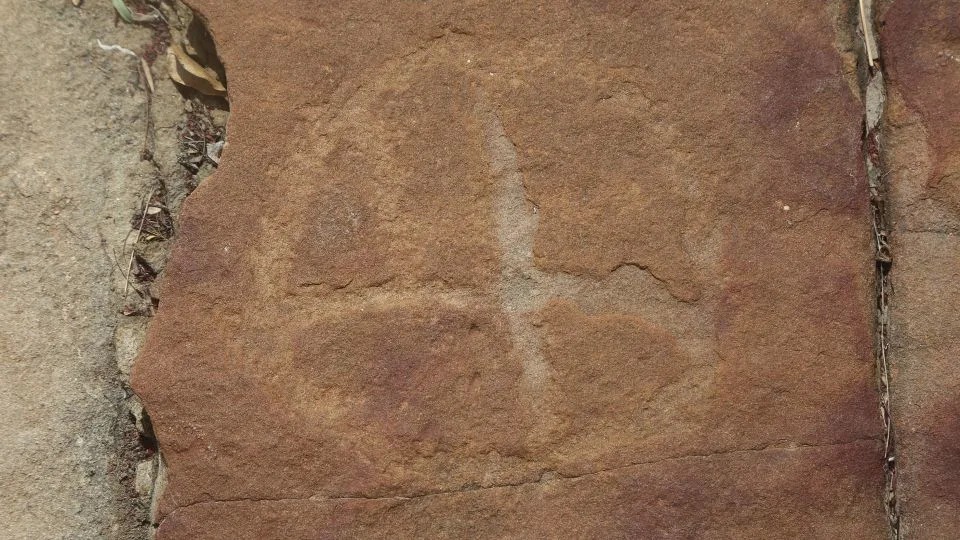
In a remarkable revelation, scientists have unveiled evidence suggesting that prehistoric humans in Brazil may have been aware of dinosaurs, shedding new light on ancient cultures’ understanding of these colossal creatures.
The discovery centers around intricate carvings, known as petroglyphs, etched into rocks adjacent to dinosaur footprints at the Serrote do Letreiro site in Paraíba, Brazil. While the petroglyphs were first identified in 1975, recent advancements in technology, including drone-assisted field surveys, have unveiled previously unseen carvings, igniting fresh intrigue into their significance.
Lead author of the study, archaeologist Leonardo Troiano from the Institute of National Historic and Artistic Heritage in Brasilia, emphasizes the potential implications of these findings. “People usually think that Indigenous people weren’t aware of their surroundings or didn’t have any kind of scientific spirit or curiosity,” Troiano explains. “But that’s not true. It’s very clear that they were interested in the footprints. We’ll never know if they knew about dinosaurs, but it is clear that they were curious about the prints and thought they were meaningful in some way.”

The petroglyphs at Serrote do Letreiro offer a tantalizing glimpse into the minds of ancient inhabitants, hinting at a level of awareness and curiosity that challenges conventional assumptions about their cognitive abilities.
What makes this discovery particularly compelling is the unprecedented clarity in the association between the petroglyphs and the dinosaur footprints. While previous instances of rock art near dinosaur prints have been documented, the intricate connection observed at this Brazilian site is unparalleled, according to the study authors.
The petroglyphs themselves exhibit a diverse array of styles, ranging from geometric shapes resembling plants to abstract forms such as squares, rectangles, and circles adorned with crosses or lines. Despite their varied nature, the precise meaning behind these enigmatic symbols remains elusive.

Moreover, the study delves into the possible cultural and ritualistic significance of these petroglyphs. Troiano suggests that communal gatherings, possibly augmented by the use of hallucinogenic plants like jurema, may have provided the backdrop for their creation. “I think rock art creation was embedded in some sort of ritual context,” Troiano speculates. “People gathering and creating something, perhaps utilizing some psychotropics.”
The association between the petroglyphs and the dinosaur footprints offers a unique opportunity to unravel the complex interplay between ancient cultures and the natural world. Radosław Palonka, an associate professor of archaeology at the Jagiellonian University in Kraków, Poland, praises the study’s significance, highlighting the importance of understanding rock art’s broader cultural context.

Jan Simek, a distinguished professor of anthropology at the University of Tennessee, Knoxville, underscores the broader implications of such discoveries, drawing parallels with ancient interpretations of fossils in other cultures. “The Brazil case is another archaeological example of this very human tendency to tie the spiritual world created in the imagination to unexplained things in the world around us,” Simek observes.
As researchers continue to delve deeper into the mysteries of Serrote do Letreiro and similar sites around the world, each discovery serves as a testament to humanity’s enduring fascination with the past and its relentless pursuit of knowledge.

Leave a Reply